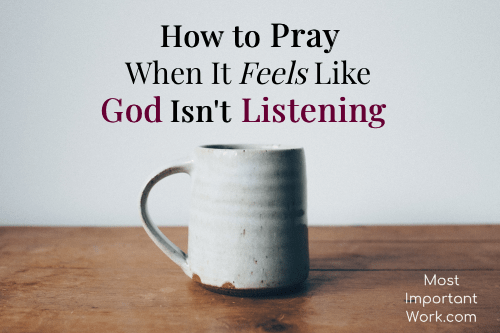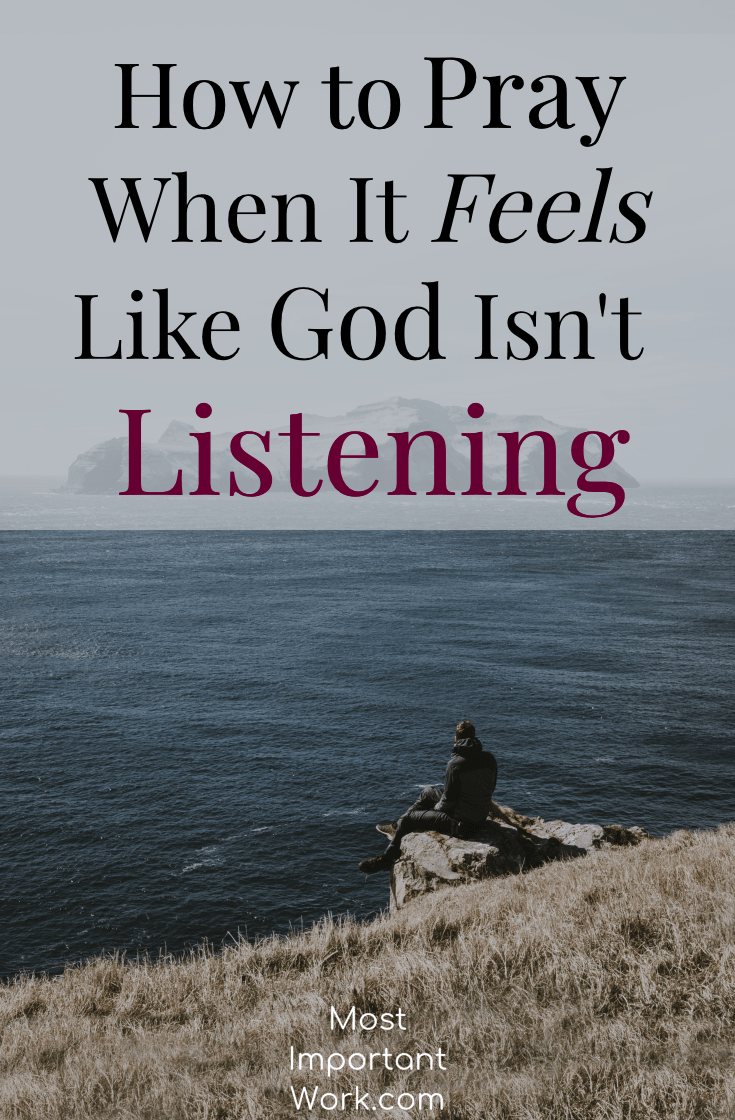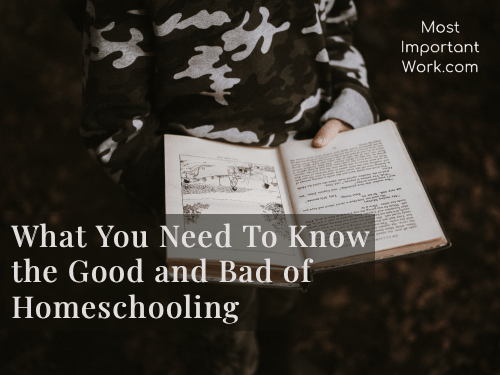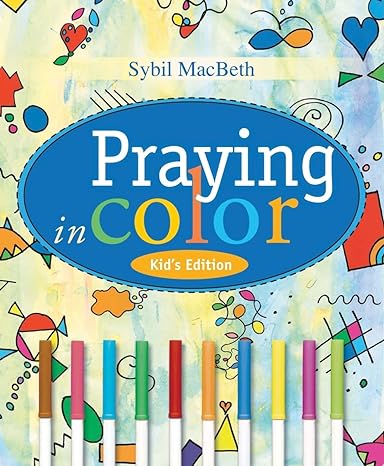
How To Pray When It Feels Like God Isn’t Listening
Reading Time: 5 min 46 sec
Have you ever wondered if God is off taking a vacation when you pray? Okay, maybe not a vacation, but it seems like every time you call out to him, you are met with deafening silence. You secretly wonder if you are doing something wrong. All your friends, your pastor, people at church are always mentioning, God said this…or I hear God today.. and you are like, “WAIT, did I miss the memo? Did God show up today and I didn’t hear about it?”
The fact that you must be defective, or a really immature Christian, festers in the back of your brain, you feel embarrassed, and you try to mask the fact that apparently you and God aren’t on speaking terms. You push your prayer frustrations to the side until one day you are confronted with pain.
Whether the death of a loved one, frustration at work, a rebellious teen, violence in the world, something stirs your heart, and you cry out to God, “God, where are you? I am in agony. I am confused. I am frustrated. You say you love me, but where are you when I need you? All I get is silence. Am I doing something wrong? Do you not love me? Where are you? I need you now.”
If that’s you, keep reading…
-
Playing Hide and Seek with God
2. The Invitation
3. Practice Showing Up

1. Playing Hide and Seek With God
So where is God? Seriously, it can seem like every time we desperately need to hear from him, he is off saving the world. What about us? Where is he, when we call out in our pain? Does he even care? Psalm 139:1-12 gives us explicit directions as to where God is hanging out.
It says, “God, investigate my life; get all the facts firsthand. I’m an open book to you; even from a distance, you know what I’m thinking. You know when I leave and when I get back; I’m never out of your sight. You know everything I’m going to say before I start the first sentence. I look behind me and you’re there, then up ahead and you’re there, too—your reassuring presence, coming and going.
This is too much, too wonderful. I can’t take it all in! Is there any place I can go to avoid your Spirit? To be out of your sight?
If I climb to the sky, you’re there! If I go underground, you’re there! If I flew on morning’s wings to the far western horizon,You’d find me in a minute—you’re already there waiting!
Then I said to myself, “Oh, he even sees me in the dark! At night I’m immersed in the light!” It’s a fact: darkness isn’t dark to you; night and day, darkness and light, they’re all the same to you.”
Is there a word or phrase that jumps out at you in this passage?
Do you notice that it says, he knows what we are thinking? Not just what we are doing, but our very thoughts and that there is no place we can go to avoid his Spirit.
King David, the author of this Psalm, was known for having a deep, intimate relationship with God, and out of that intimacy, he shares his experience of God with us. Now before you think that this is just a picture of David’s relationship with God, David wrote this psalm for the choir director. Meaning this song was written to be sung by people of Israel, proclaiming Gods praises, attesting of Gods’ faithfulness to us.
We read this passage and tell ourselves, yes, of course, God is with me. Any person who has been a Christian for longer than five minutes knows that God never leaves us or forsakes us.
We know this truth mentally but it sure doesn’t feel like he is present. So, if we can’t outrun, out hide, or out fly, the love of God than why can’t I hear his voice?
2. The Invitation
I was having a conversation with an acquaintance, and halfway through, I noticed that her eyes kept drifting, and she was looking very distracted. All throughout our conversation, she kept smiling and nodding to the people around me. Needless to say, it was a very distracting conversation for both of us.
We can fall into this same trap in our conversations with God. We are either so desperate for an answer that we spend the entire time shouting our requests to God. Or we say a five-second prayer, wait for a moment or two, and then rail at him when he doesn’t show up in a miraculous way.
Anthony Bloom, a spiritual writer says it this way, “We complain that God does not make himself present to us for the few minutes we reserve for him, but what about the twenty-three and a half hours during which God may be knocking at our door and we answer, “I am busy. I am sorry.” Or when we do not answer at all because we do not even hear the knock at the door of our heart, of our mind, of our conscience, of our life.”
God loves spending time with you. He is not hiding or playing games with you. He genuinely loves to hear your voice. And he is presenting you with a Grand Invitation. He is inviting you to go deeper into a love relationship with him. He is asking, “I am inviting you to spend time with me?”
He is asking you to invite him into your entire day, not just the twenty minutes you spend reading the Bible each morning.
So how can we practically be present with God all throughout the day? How can we give him more than a distracted conversation in a time of crisis?
3. Practice Showing Up
Do you ever feel like you are wasting your time when you sit down to have devotions and nothing seems to happen? That there are so many other responsibilities clamoring for your attention, taking twenty minutes out of your day can seem well, a lavish extravagance.
You go through the motions of reading a Bible passage or filling in the answers in a devotional, and at times it can just seem…well boring. (GASP!) Yes, I did say boring, because frankly, devotions can be boring.

I got bored. I wanted something more than filling my head with facts about God (though it is an important part of our faith), I wanted to actually have a living, breathing experience of God. I wanted what Daniel, David, Esther, Mary, and countless others had with Jesus. I wanted to have a real relationship with him.
To have a deep relationship with him, we must be active participants in our conversations with God. Setting aside distractions (or at least keeping them at bay), and engaging in talking and listening to God. And here is the key part…even when it feels like nothing is happening.
It seriously is about the practice of showing up, day after day and laying down our agenda for his. Asking God that he would spark a deeper desire for more of him in our hearts.
Here are some suggestions of practical things that you can use throughout your day as a reminder to be present to Jesus.
1. Light or use a battery powered candle to remind you that God is with you and in you.
2. Place a small cross in your pocket. Every time you touch it serves as a reminder to turn your focus back to Jesus.
3. Set reminders on your phone. You can label them with messages, like “You are a beloved child of God.” “How is your day going? Love, God” “I am with you today- Love, God”
4. Hang a meaningful symbol from your rearview mirror. Every time you get in the car, let it serve as a reminder to pray.
5. Put a picture of Jesus holding a lamb, or with children on the background d of your phone or computer. Let it serve as a reminder that you are a child beloved by God.
Do you want to learn how to live WITH God? Do you want to experience a deep relationship with Jesus not just find out more facts about him? Check out Liturgy of the Ordinary by Tish Harrison Warren. This book was pivotal in my own journey, in learning how to be present to God all throughout my day. I LOVE it!
What about you? What is your #1 issue when it comes to living life with God? Leave a comment, and don’t forget to follow Most Important Work on Pinterest!
































